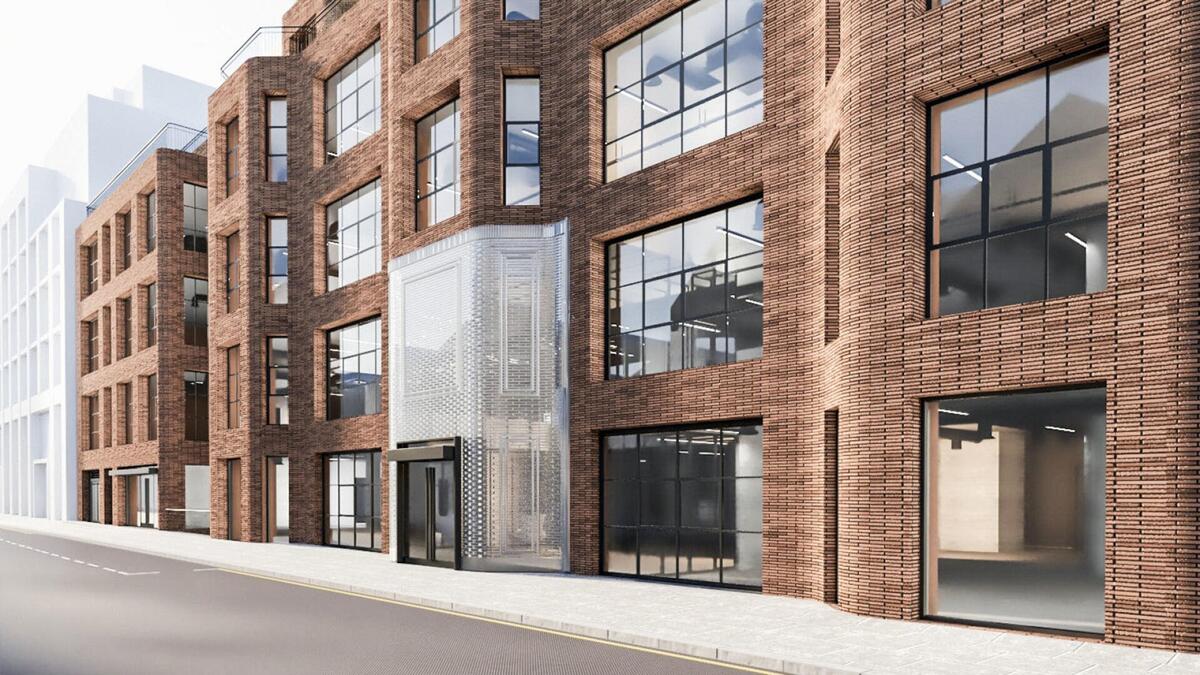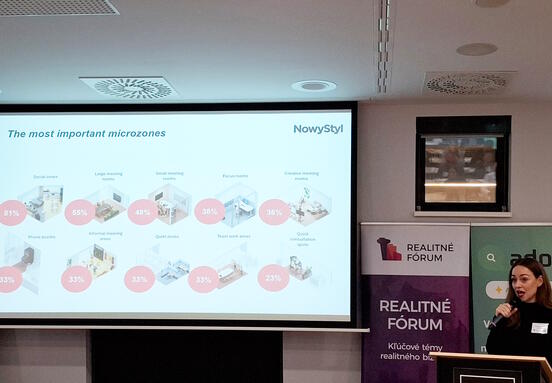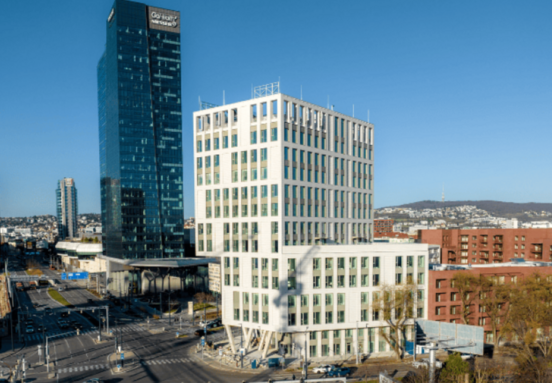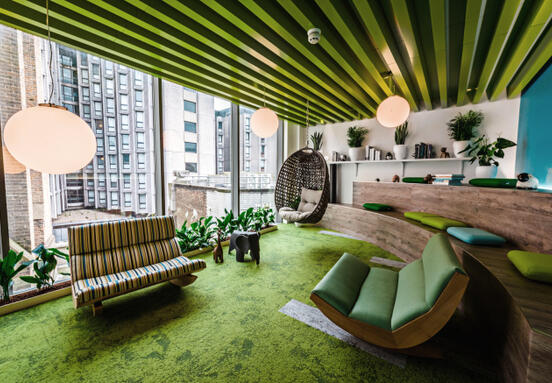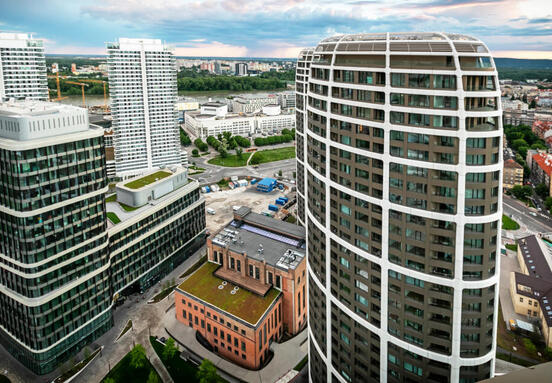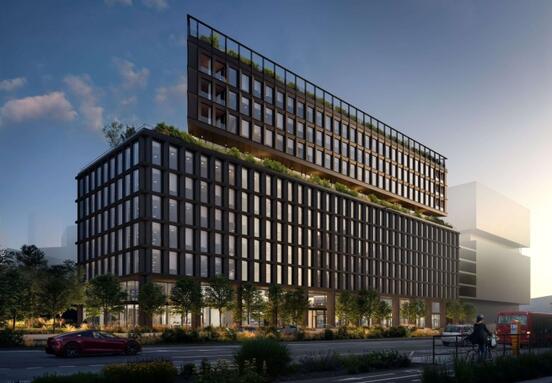Think globally, apply locally
The complexes of office buildings with modern technologies and various services are becoming separate small locations in the city. Like the human body, buildings can examine themselves and evaluate information about their operation, which should be efficient and environmentally friendly. The goal is the sustainable development of the environment not only in the building and its immediate surroundings but ultimately in a broader perspective on the entire planet Earth.
Requirements for constructions in this area are most often concentrated in two certification systems - LEED and BREEM. What is the difference between them? Some experts recommend a more LEED for office buildings not designed for a specific client and a BREEM certificate for a well-known client for industrial and residential buildings.
Certification of quality and sustainability can be important for tenants as well as foreign and domestic real estate or investment funds that are looking for a good opportunity in the commercial real estate market. This was shown, for example, in the Bratislava administrative building Einpark from the developer Corwin, which holds the LEED Platinum environmental certificate. The quality of the building was also reflected in the resounding names of the tenants, for example, the Slovak headquarters of McDonald's and Mercedes-Benz are located there. In Einpark, they have a technology-focused on monitoring the concentration of carbon dioxide, they used a double facade or passive ceiling cooling. Part of the enviro access is the location of the building directly on the bike path.
The Slovaks own the wisest building in the world
Let's take a look at the winner of the worldwide Smartest Building 2021 competition, the Southworks office building in London. It can be gratifying for us that it belongs to the Slovak investment holding MiddleCap Group. It is located on Rushworth Street in the heart of the UK capital and is scheduled to end this year. It won a competition of 14 buildings, including Amsterdam's intelligent building EDGE Olympic and the 300 South Riverside Plaza Suite 1980 project in Chicago, USA. In Slovakia, another fact can keep us at heart, namely the fact that the Twin City Tower building in the Bratislava zone of Nové Niva from the developer HB Reavis was one of the candidates for the prestigious award.
According to information from the MiddleCap Group website about its London building from the workshop of the renowned studio of architects and designers SPPARC Architects, the most important thing in it is well-being and human health. The building has a Platinum Smart Building Certificate, which is a certificate evaluating smart buildings. Its smart superstructure on more than 6,500 square meters of leasable area is interspersed with sensors and technology that monitors air quality, lighting conditions, noise and building occupancy. The system perceives people, their location, preferences and thanks to this information it can maintain a healthy and safe environment. This is to bring comfort to employees in the building through an integrated application.
In addition to office space, Southworks also offers other outdoor and indoor benefits that support a healthy and relaxed urban lifestyle. View from the shared and private roof terrace, six metro stations and four main stations within walking distance, areas for bicycles, showers, swimming pools or flexible floors and a wide range of snacks. Thanks to technology, the building contributes to sustainability and user comfort, said MiddleCap Real Estate partner Tomáš Jurdák.
More certified buildings
We do not have to be ashamed of the level of ecological certification in Slovakia, quite the contrary. According to the Executive Director of Penta Real Estate Slovakia, Juraj Nevolník, certification according to LEED or BREEAM is already the standard for most new office buildings. Since they began to emerge at the turn of the millennium, their level of certification is often, paradoxically, higher than in established office markets in the West. For international corporations, the requirement for a certain degree of certification of a building is often stated in the request for proposal (RFP).
Pavel Pelikán, CEO of J&T Real Estate, agrees with this when he claims that our national standards are even more demanding than in the United Kingdom or the USA. So office building projects meet the environmental standard of projects in the European Union or the USA. The theme of green buildings has been brought about by large foreign companies with their global standards. Gradually, domestic companies are also aware of social responsibility and are increasingly prioritizing a sustainable and healthy work environment.
The shift in the perception of green buildings has been significant and relatively fast in recent years. The legislation on energy efficiency of buildings also contributed to this, gradually tightening the criteria up to today's energy class A0. "For example, ten years ago there was no certified building in Slovakia yet, currently 41 buildings in the LEED system and 109 in the BREEAM system are already certified together, or in the certification process," said HB Reavis specialist Martin Stohl.
The pandemic also affected office projects
During the corona of the pandemic, its consequences in the emphasis on the protection of the health of people who use it as employees and visitors were manifested.
In January of this year, as the second wave of the pandemic began, Penta Real Estate opened the Sky Park Offices office building. She took care to protect the health of the people who work in it, as well as all visitors. "We have applied various technologies to the building, such as air recuperation through state-of-the-art filters meeting the quality of the WELL certificate, carbon dioxide meters in meeting rooms with an automatic fresh air supply regulator," says J. Nevolník. Access to the building and elevators is also possible without contact via the so-called virtual key. Of course, there is regular hygiene of the contact surfaces and available disinfection. He currently sees a gradual return to office buildings and believes that personal interaction in the workplace is essential, especially for creative thinking.
From a pandemic sustainability perspective, location, mixing of different functions and quality public spaces are important. The difference is whether you have to go to work using transport or on foot or by bike. For example, if you are not allowed to eat in the interiors of cafes and restaurants, whether you can sit on the terrace or take your food with you and eat or meet on a pleasant promenade. Measures such as increased disinfection of surfaces and spaces, increased care for air exchange, or a new organization of the movement of employees can be introduced in flexible buildings very quickly, stated J. Pelikán. According to him, the advantage is that as a developer and owner of buildings, they also provide administration and are able to react quickly to the situation.
The pandemic brought to the fore several topics that were not a priority in society. The most significant are safety and health at work. Until now, they have been associated with high-risk occupations rather than with the interiors of office buildings and life in them. Emphasis is placed on the individual needs of employees and companies and the very well-being and health of people, which is a philosophy that he applies in HB Reavis long before the pandemic, said M. Stohl. Of course, prevention, high hygienic standards, ensuring sufficient air exchange with quality filtration, motion control for effective contact detection is still a matter of course. Finally, the possibility of greater work flexibility and hybrid work styles, including alternating home office work with offices.
Cost reduction
The primary goal was to take measures to prevent the spread of the infection, said regional developer Reinoo. He set the air conditioning system for sufficient air exchange in occupied offices so that only fresh air was supplied. The cleaning and filter replacement intervals for air handling units and fan coil units have doubled. The second goal was to reduce the consumption of buildings in their so-called. stand by mode. The result has been a reduction in energy costs so that increased operating costs do not have to be passed on to clients. In the case of operations affected by the pandemic, which had to be compulsorily closed for a long time, he agreed with the tenants to forgive part of the lease, to defer its payment and on repayment schedules.
Source: // Trend
